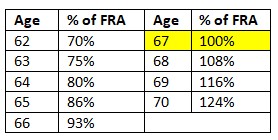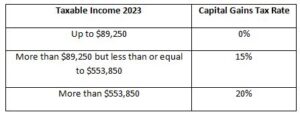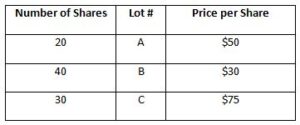If you’re engaged in a committed relationship with another person, there are many things you’ll want to discuss and to find a way of dealing with them that works for both of you. I previously wrote about how you can achieve this alignment and it might be good to read that article before digging into this one. Okay, now that you have some ideas about how to discuss finances with each other, let’s explore options you have for blending your finances.
There are three basic ways to handle your finances as a couple. These are: Keep finances separate, partially combine finances (hybrid approach) and completely combine your finances. There is not a best approach for each couple. You’ll need to work this out between yourselves. However, knowing about these three options can help you explore what’s best for you. This month, we’ll discuss the first two approaches. Next month we’ll dig into completely combing your finances and we’ll also give you some information on separating your finances should that become necessary.
Separate Finances. Keeping finances completely separate in marriage is a financial arrangement where each partner maintains individual control over their own money, accounts and financial responsibilities.
Pros
- Financial Independence
- Autonomy: Each partner retains full control over their own income and spending decisions.
- Self-Sufficiency: It can foster a sense of independence and self-reliance.
- Easier Budgeting for Personal Expenses
- Personal Accountability: Each person is responsible for managing their own finances, which can simplify personal budgeting.
- Individual Goals: Easier to pursue personal financial goals without needing to compromise.
- Avoiding Conflicts Over Money
- Reduced Tension: Less potential for arguments over spending habits or financial priorities.
- Privacy: Each partner can maintain privacy over their financial matters.
- Protecting Individual Credit Scores
- Credit Protection: Individual financial missteps won’t affect the other partner’s credit score.
- Debt Management: Personal debts remain separate, avoiding shared liability.
- Simplified Asset Division in Case of Separation
- Clear Boundaries: Assets and liabilities are already separated, which can simplify legal and financial matters in case of divorce.
Cons
- Lack of Transparency
- Financial Secrecy: Keeping finances separate can lead to a lack of openness about each other’s financial status.
- Trust Issues: Potential for trust issues if one partner is unaware of the other’s financial situation.
- Complicated Shared Expenses
- Expense Management: Managing shared expenses like rent, utilities and groceries can be more complex.
- Equitable Contributions: Deciding how to fairly split joint expenses can be challenging.
- Potential for Inequality
- Income Disparities: Differences in income can lead to feelings of inequality if one partner cannot contribute equally to joint expenses or savings.
- Financial Imbalance: One partner may end up shouldering more of the financial burden.
- Reduced Financial Cohesion
- Disjointed Financial Goals: It can be harder to align on shared financial goals and long-term planning.
- Less Collaboration: Reduced opportunity for teamwork in managing finances and achieving joint objectives.
- Missed Financial Benefits
- Joint Accounts Perks: Missing out on benefits such as combined savings interest, better mortgage rates and joint tax returns.
- Emergency Situations: In emergencies, pooled resources might be more effective than separate funds.
Partially Combined Finances. Partially combined finances can offer a balanced approach, allowing couples to enjoy the benefits of shared financial responsibilities while maintaining personal financial independence. Successful management of this approach requires clear communication, mutual understanding and regular financial check-ins to ensure both partners feel comfortable with the arrangement.
Pros
- Balance of Independence and Unity
- Autonomy: Each partner maintains some financial independence with their own accounts.
- Teamwork: Joint accounts for shared expenses foster a sense of partnership and teamwork.
- Simplified Shared Expenses
- Joint Accounts for Bills: Easier management of shared expenses like rent, utilities and groceries through joint accounts.
- Expense Sharing: Clear mechanisms for contributing to joint expenses while maintaining personal spending control.
- Transparency and Trust
- Openness: Joint accounts provide transparency about shared financial goals and expenses.
- Trust Building: Partial sharing fosters trust while allowing personal financial privacy.
- Flexibility
- Adaptability: Easier to adjust contributions and responsibilities as circumstances change.
- Personal Goals: Each partner can pursue individual financial goals without affecting the joint budget.
- Financial Security
- Emergency Fund: Combined resources in joint accounts can be beneficial in emergencies.
- Shared Savings: Easier to save for shared goals like vacations, home purchases or children’s education.
Cons
- Complex Financial Management
- Tracking Issues: Managing both joint and individual accounts can be more complex and time-consuming.
- Coordination: Requires careful coordination to ensure all expenses and contributions are managed effectively.
- Potential for Disagreements
- Spending Disputes: Differences in spending habits can still cause disagreements over joint account usage.
- Contribution Imbalances: Disparities in income or contributions to joint accounts may lead to tension.
- Partial Transparency
- Limited Openness: Not all financial matters are shared, which may lead to misunderstandings or lack of full financial insight.
- Privacy Concerns: Balancing transparency with personal privacy can be challenging.
- Income Disparities
- Fairness Issues: Differences in income can make it difficult to decide how much each partner should contribute to joint expenses.
- Resentment: One partner may feel burdened if they contribute more to the joint account due to higher earnings.
- Legal and Tax Implications
- Complex Tax Filing: Partial combining may complicate tax filing and financial planning.
- Legal Issues: In case of separation or divorce, dividing partially combined finances can be more complicated.
I hope this article gives you some useful information on this very important topic. Please return next month for the second part of this story. In the meantime, if you’d like to begin discussing the best way to combine finances, or discuss any other financial matters, in a no-charge, no-obligation initial meeting. Please visit our website or give us a call at 970.419.8212 to set up an in-person or virtual meeting.
This article is for informational purposes only. This website does not provide tax or investment advice, nor is it an offer or solicitation of any kind to buy or sell any investment products. Please consult your tax or investment advisor for specific advice.







